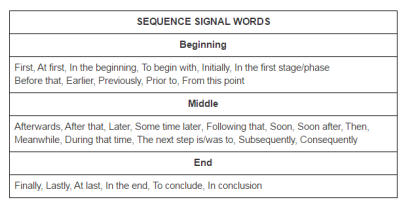Sequence ELL Modifications and More
For students who find sequencing challenging, try these tips and strategies:
- Do the Challenge task with students. You identify the first event or item in the sequence, then have students come up one at a time to sequence the rest.
- Watch the BrainPOP Jr. movie Sequence. Though it may seem young, it will provide a basic background for understanding sequence.
ELLs have varying language proficiency levels, and so it’s important to provide differentiated tasks and language supports, such as visuals, sentence frames, and graphic organizers. Here are ideas to try in your classroom to meet students’ language needs:
- Beginning students show what they know by sequencing pictures and adding labels or words, such as first, next, last.
- Intermediate students sequence a series of ideas, events, or steps using transition words. Manipulating sentence strips is a fun and effective activity for practicing sequence.
- Advanced students describe a sequence or produce a cohesive narrative using multiple sequence words and phrases. Begin with a cloze activity, deleting all of the transition/sequence words and phrases. Provide a word bank for students who need more support.
Sequencing Language
Knowledge of certain words and phrases, such as the following, is necessary for sequencing:
- Ordinal numbers (first, second, third … )
- Adverbs (first, next, then, finally)
- Time expressions and clauses (In the morning, last year, after we woke up)
Display a chart of Sequence Signal Words or Sequence Sentence Starters.
Graphic organizers are helpful in supporting sequencing skills. Here are some useful graphic organizers to use with your ELLS:






